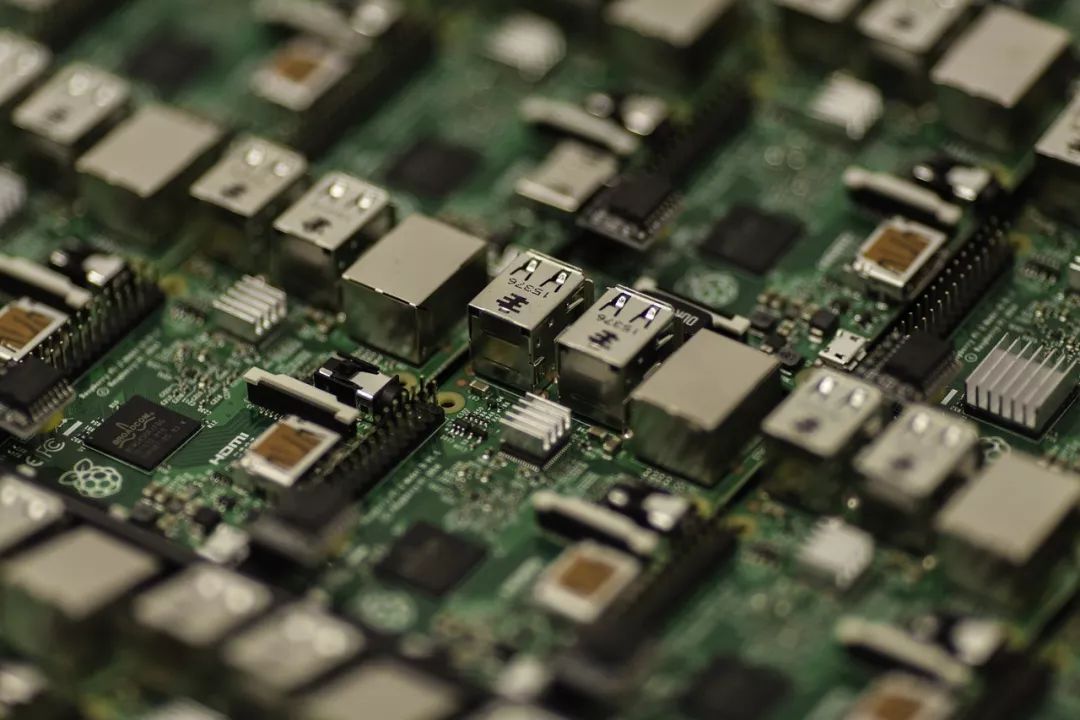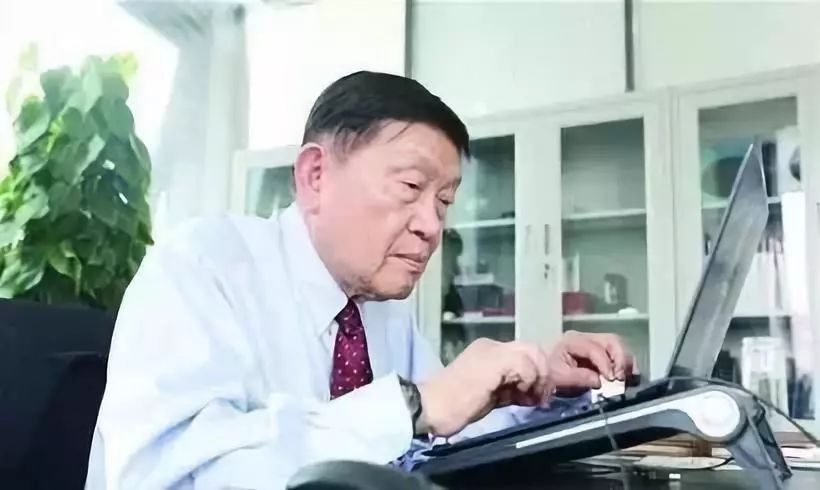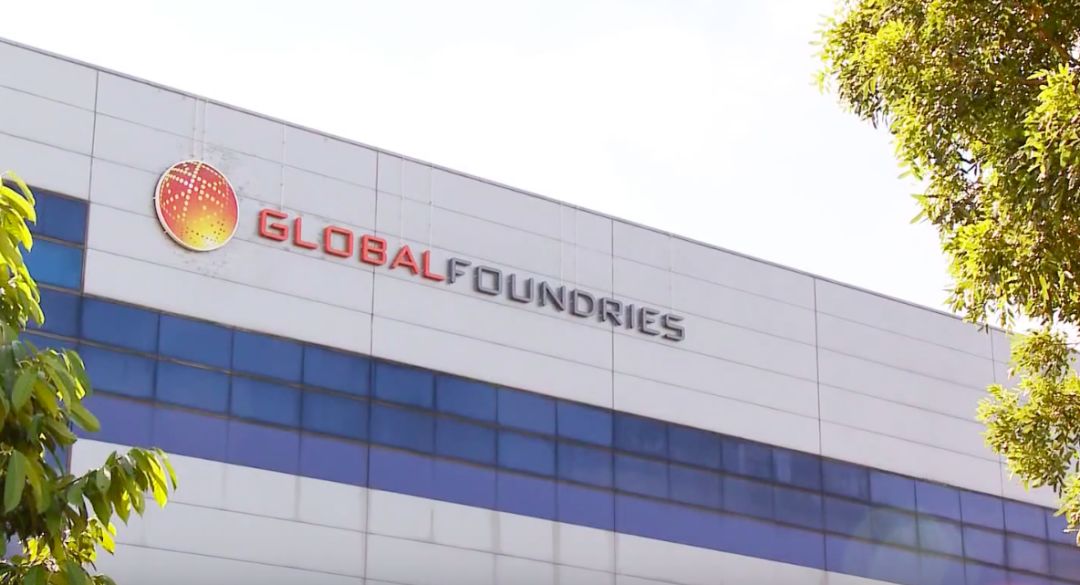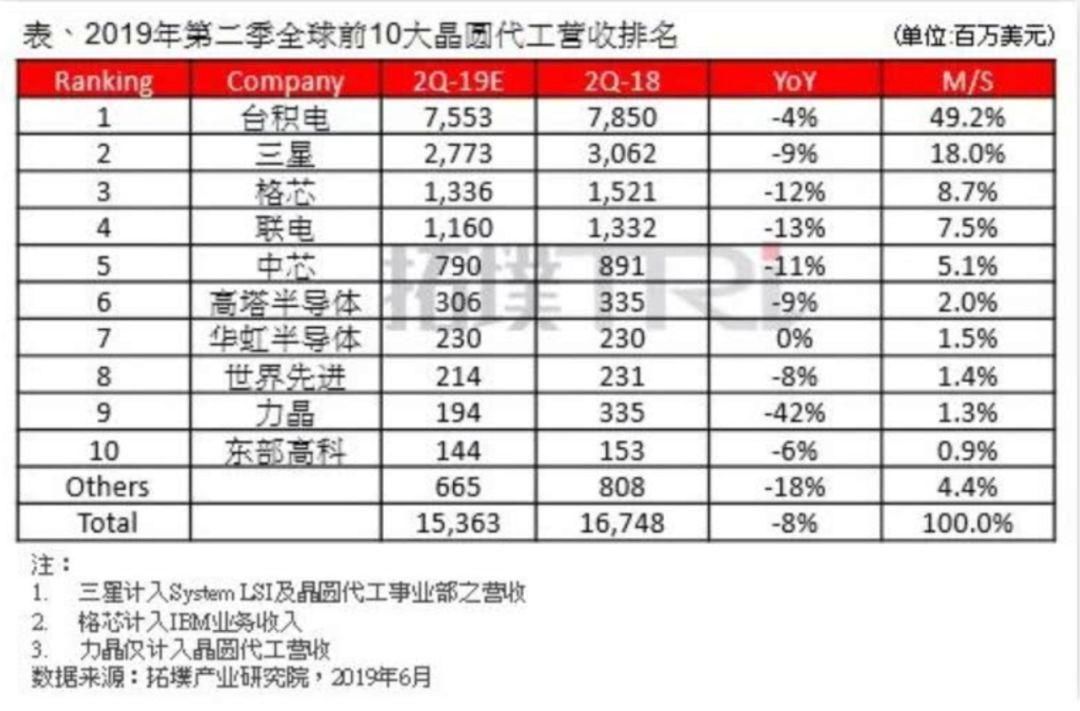The scene of the mobile phone conference is actually the battlefield of the chip brand manufacturer PK.
Editor’s note: This article is from WeChat public account “Five Moment Research Society” (ID :kejiwuju), author Keji.
In the early morning of September 11, at the annual Apple Autumn Conference, in addition to the announcement of the new iphone, there is Apple’s new A-series chip, the A13 biochip.
In the introduction of the chip, let the netizens be surprised that this year Apple also played PPT and the performance of the friend chip, in addition to the Snapdragon 855 and Snapdragon 845, Huawei P30 Pro used unicorn The 980 is also impressive.

Image from the web
Although this is rare at Apple’s press conference, this form of comparison with the friend’s chip has become the proof that the mobile phone is the hardest core of the new mobile phone conference, so at the mobile phone conference On the spot, it is actually the battlefield of chip brand manufacturer PK.
While chip makers are eager to kill in the frontcourt, the rear chip manufacturing also hides a more intense battlefield. In this battle without smoke, there have been too many intrigues, and sometimes if the competition is too fierce It is prone to the tragedy of the gun and the battlefield in front.
What does it mean for a new wafer foundry that is a little late in the global battlefield?
Spots into gold, division of labor
Remember that on February 14, 1946, the world’s first electronic computer ENIAC came out in the United States. It is a behemoth consisting of 17,468 tubes, 60,000 resistors, 10,000 capacitors and 6,000 switches, weighing 30 tons, covering an area of 160 square meters, but if compared with current computers, computing power Not as good as today’s portable calculator.
After 73 years, the current computer is so thin that it can be carried around, and the computing power is greatly enhanced, all of which rely on the discovery of semiconductors and the development of electronic circuits.
The first person in the world to discover semiconductors is Faraday, the father of British electronics. Since then, this material, which is between insulator and conductor, has controlled conductivity, and has been applied to electronic devices, especially in the second During the World War, due to the massive demand for radar and radio technology in the war, the British and American military began to increase investment in semiconductor devices.
However, most of the semiconductors that were first recognized were metal sulfides or oxides. These are not the best materials for making electronic devices, and people are beginning to realize that machines made of tubes are not only bulky, but also The cost is also very expensive. In December 1947, Shockley, Bradton, and Barton of Bell Labs used the enamel to make the first transistor. Compared to vacuum triodes, computers made up of transistors are smaller and more power efficient, and the computational speed is greatly improved, but by then the circuit is composed of discrete components until Jack Kirby of Texas Instruments inadvertently generates An idea.
In 1958, he added a number of components such as triodes to the semiconductor chip, and connected the components with thin metal wires to form an integrated circuit in the world. Soon after, Fairchild’s Noy In the second year, Sis also developed another integrated circuit based on the silicon planar process.
The integrated circuit has completely changed the appearance of electronic products, but the content of germanium in the natural world is very limited. On the contrary, the stock of silicon on the earth is very rich. The main component of sand found everywhere is silica, and silicon dioxide. It has very good strength and corrosion resistance at normal temperature and pressure, so the raw materials of integrated circuits are changed from silicon to silicon.
Since this, Fairchild Semiconductor has ushered in a short-lived glory for the identity of the inventor, and it has not fallen behind Fairchild Semiconductor. It has emerged that many semiconductor companies such as Intel and AMD are located in a narrow strip on the west coast of the United States. Over time, this place The name has become synonymous with the semiconductor industry clusters around the world, it is Silicon Valley.
If Silicon Valley witnessed the rapid development of the world’s semiconductors, Intel founder Gordon Moore predicted the development speed of the transistor, that is, “the number of components that can be accommodated on the integrated circuit when the price is constant.” It will double every 18-24 months and the performance will double.” 
The development of microprocessor transistors in recent years under Moore’s Law (Wikipedia)
It is true that under the prediction of Moore’s Law, the number of transistors on integrated circuits has increased from less than 10 in the 1960s to 100,000 in the 1980s and 10 million in the 1990s. Now it is hundreds of millions to 10.3 billion, so Moore’s Law has become the benchmark for follow-up semiconductor companies to catch up with each other.
And early semiconductor companies are mostly integrated component manufacturers (IDM) from IC design, manufacturing, packaging, testing, and sales, but the more complicated and costly semiconductor wafer design and production Increasingly, a single semiconductor company is often unable to afford high R&D and production costs from upstream to downstream.
Therefore, from the late 1980s, the semiconductor industry gradually moved to a professional division of labor, divided into upstream companies responsible for design and downstream companies responsible for packaging and manufacturing. However, the beginning of this differentiation was due to the establishment of TSMC. .
In 1987, when Zhang Zhongmou was preparing to create TSMC, the world’s semiconductor industry was dominated by IDM manufacturers represented by Intel and Texas Instruments. Zhang Zhongmou knew clearly that facing the big factories was undoubtedly a stone hitting stone, so he Decided to take a different approach and turn TSMC into a specialized foundry company. 
TSMC first opened up a unique foundry model in the wafer manufacturing industry chain that is only responsible for chip manufacturing or packaging testing, which is often referred to as the Foundry model, and the success of TSMC has also made this emerging Foundry model rapid. Development has become the main mode of the semiconductor industry.
In the near future, there were many forces around TSMC coming to “grab meat to eat”. For TSMC, which occupied the high ground for the first time, the situation has already become a “easy to defend” trend. For many years, TSMC has been stable in the wafer generation. The throne of the faucet, and even the rankings of the last few have changed little.
But even if the surface is no longer turbulent, as long as it is not a pool of stagnant water, there will be dark tides under the water surface, and the foundry is the same.
It’s better to take the initiative if you’re not in the cold.
Zhang Zhongmou made the first person who dared to eat crabs. As the new model was gradually accepted by the market, when he began to suffer hard, he attracted the war of Lianhua Electronics, another semiconductor company in Taiwan Province.
Union is a IDM company with many years of history,Against TSMC, in 1995, he gave up his own brand and transformed into a pure professional wafer foundry. He established joint ventures with 11 IC design companies in the United States and Canada to establish Liancheng, Lianrui and Lianjia foundry companies.
Two years later, the fab began to put into trial production and achieved gratifying output. On the occasion, UMC gradually saw the hope of defeating TSMC, and released the two “Liandian must kill TSMC within two years”. In the days after, a ruthless fire destroyed the Lianrui plant of UMC. 
This fire not only Destroyed the value of 10 billion factory buildings, and also ruined the original expected profit of 2 billion yuan orders. At one time, UMC changed from a heroic attitude to a high debt, missed the peak of semiconductor development, and caused a large number of customer orders.
The experience of UMC can only be attributed to the “unfavorable years of the flow”, rather than defeated under the positive technical competition of TSMC, so there is a regret in the mind of UMC, while the other side of TSMC is still stable and stable. Position, while TSMC also knows that if you are always in a high position, you will always have to worry about someone climbing up to push yourself down. The best way is to be strong enough.
When the semiconductor components are getting smaller and smaller, not only the wafer itself needs to be improved, but also the metal wires that are connected in the middle need to be updated. At that time, there are mainly two solutions to solve the problem of the backwardness of the wires. One is to directly change the materials, and the resistors are used. The lower copper replaces the aluminum, and the other uses Low-K Dielectric (low dielectric insulation) as the dielectric layer material.
In 2000, IBM’s patented “rich man” IBM found TSMC and UMC with the new 0.13-micron technology of copper process and Low-K material. In the face of ready-made new technology, UMC accepted it. TSMC is choosing to develop itself.
Can let UMC never imagine that IBM’s technology is limited to the laboratory, and the actual manufacturing yield is too low to reach mass production.
In contrast, the 0.13 micron process technology independently developed by TSMC in 2003 has been well received by customers, and the turnover has once again greatly distanced the distance that UMC has been chasing.
Looking at the fact that Taiwan Province has no rivals with Taiwan Semiconductor Manufacturing Co., TSMC has looked at the international market and started to challenge IDM big companies with the strategy of taking the initiative. The first is Samsung in the Asian theater.
At that time, Samsung not only designed its own production processor, but also self-sufficiently owned its own electronic products, and also held orders for Apple’s mobile phone processor. It can be said that it is going to be windy and rainy, but with the friction between Samsung mobile phones and Apple mobile phones. TSMC immediately saw the rift between Samsung and Apple’s lawsuitTiming, in 2014, began to enter the Apple A series processor supply chain.
After TSMC snatched Apple’s cake, in 2015, the situation between the two was once again reversed, and this time in the process.
Source: Southwest Securities
Before the 20nm process, TSMC was ahead of Samsung. However, Samsung, which was still worried about the yield of the 20nm process, changed its mind. It skipped the 16nm process directly from 16nm, and only used it from backward to leading. Less than half a year.
Samsung’s plug-in growth has caused the outside world to blame Liang Mengsong, who has been placed under Samsung’s door after TSMC’s departure. Liang Mengsong once made a battle in TSMC. After leaving TSMC in 2009, he was hired by Samsung and also worked for Samsung. During the period, Samsung’s process technology has developed rapidly. At the end of 2011, TSMC officially sued Liang Mengsong on the grounds of leaking industry secrets.
Of course, a company’s progress can’t all be attributed to one person, but everything is too coincidental. After the lawsuit ended, Liang Mengsong also came out from Samsung and officially joined SMIC in October 2017, but history is always the case. Similarly, before the addition of Liang Mengsong, TSMC also treated SMIC as an emerging semiconductor company by the same means.
The connection between SMIC and TSMC began with Zhang Weijing, the founder of SMIC.
Zhang Yujing (image from the web)
Before the founding of SMIC, Zhang Yujing founded a semiconductor company called Shida in Taiwan Province. This is the third wafer foundry in Taiwan after TSMC and Lianhua Electronics. As the world grew bigger, it began to threaten TSMC’s land in Taiwan.Position, so Zhang Zhongmou will come forward and discuss with Zhang Yujing about the acquisition of the World University.
In 2000, TSMC acquired Shida Semiconductor. On August 24 of the same year, SMIC officially built a piling in Shanghai. After only 13 months, SMIC had an eight-inch wafer foundry. This speed is a miracle in the industry.
The rapid development of SMIC has led to frequent litigation harassment by TSMC.
The reason is that when Zhang Yujing founded SMIC, most of the start-up teams were former TSMC employees. In August 2003, at the critical moment when SMIC was about to be listed in Hong Kong, TSMC saw the right time in California. SMIC was sued for the reason that the resigned employee was suspected of leaking trade secrets. This back-end product has repeatedly harassed SMIC in the same way.
In the face of TSMC’s endless lawsuits, the contradiction between the two finally broke out in September 2009. TSMC filed a lawsuit against SMIC for the fourth time since the last dispute settlement was only one year and seven months. And won the case, and a few hours after the two sides signed the settlement agreement on the compensation rules, Zhang Yujing ended the battle with TSMC with self-retirement.
Although SMIC has paid a painful price for this, it has not stopped SMIC’s rapid development. Now it has ranked among the top five in the world’s top ten pure fabs.
And for TSMC, the winner of the battle, the journey is far from over. On the contrary, the situation at this time has already presented a pyramid. The pressure closer to the apex is greater, and it is slightly inadvertent. Will be tired of the upstream upstream enterprises.
Take the whole body
Every step in the manufacture of chips is incomparable, and interlocking, as long as one ring is left behind, there will often be a domino effect that will lead to the whole body. The foundry is not as elegant as the designer. It is the most basic and most critical part of the whole. Just like water and electricity gas, it is easy to be ignored. But if something goes wrong, it will affect normal life.
The recent list of famous foundries and TSMC’s lawsuits has spread to upstream companies, except that the plaintiffs in this lawsuit are no longer TSMC, but from the United States.
Gexin is a fab that was split from AMD in March 2009. Although it is rooted in red, it is quite good in the foundry business.Bumpy, for example, when TSMC was mass-produced in the 28-nanometer process in 2011, the core was fully mass-produced more than a year later, so since its establishment, the core profit has always been negative, especially in 2014, the net loss was as high as 1.5 billion US dollars.
In fact, most of the reasons for the loss are from Gexin, because the core 14nm FinFET process is licensed from Samsung, and the 7nm process technology is also based on the IBM semiconductor business bought in 2014. The independent research and development ability makes Gexin difficult in this industry that uses technology to speak.
And under Moore’s Law, if you want to stay in the process, you have to invest a lot of research and development funds, which is exactly what Gexin can’t get. Finally, on August 27, 2018, Gexin is quite good. Can not stop, announced the shelving of the process technology below 7 nanometers, but just a week ago, UMC also announced that it will no longer invest in advanced processes below 12 nanometers.
The volume of the core has no strength to single-chip power, but in the past few years, it has not been sitting still.
In 2017, Gexin once accused TSMC of controlling the market to the European Commission. In 2018, it also filed an anti-monopoly investigation with TSMC against the Chinese authorities. In addition, the grid was filed in the US and German courts on August 26 this year. TSMC and its customers infringe on the company’s 16 patented technologies.
Gexin harassed TSMC again and again, hoping to shake the TSMC customers to pressure TSMC and influence their decision-making, and to gain a little benefit for themselves, but this time the core fire not only points to TSMC, but also includes Apple, Broadcom and Qualcomm. Many high-tech companies such as NVIDIA, Cisco, Google, and Lenovo.
While filing a lawsuit, Gexin also applied for a court injunction to prevent TSMC from using infringement technology to import products into the United States and Germany, so once the lawsuit between TSMC and Grid is broken, the core The approach will directly threaten TSMC customers. 
The case of factory manufacturers competing for “injury” is not only for the core and TSMC. This time, when Samsung and TSMC snatched back the Apple chips, they had been chasing after the process, and finally together with TSMC on the iPhone 6s launched in 2015. A9 processor foundry.
It’s just that Samsung is too impatient in the process of catching up with TSMC. As a result, the iPhone 6s issued by Taiwan Province, the Samsung 14nm foundry mobile phone is not as good as the TSMC 16nm foundry in terms of performance and battery life. Apple chip door accident.
All say that you fight for fishermenIn the competition between Samsung and TSMC in the past, Apple’s first dual-generation model was not cheap, but it was returned by users on a large scale. Since then, Apple’s mobile phone processor has been manufactured by TSMC for a long time.
It can be said that chip manufacturing to sales, as long as the companies in the chip industry chain are actually “a grasshopper on a rope”, but when globalization closely links their destiny, start How will the late nascent foundry workers protect themselves or even counterattack?
Newland:Opportunities and Challenges
According to the latest report released by the Takuya Industry Research Institute, the top five foundry manufacturers in the second quarter of 2019 are the same as last year, and TSMC ranked first with 49.2% market share, ranking second with second place. Samsung has opened a certain gap, but the third to fifth share is not much different.
It can be seen that the most intense war between wafer foundries will occur between the first and second, but under the pressure of Moore’s Law, TSMC and Samsung are still in the process. On the chasing, the remarks that Moore’s Law is about to expire have begun to emerge.
In January of this year, Nvidia CEO Huang Renxun predicted the future of Moore’s Law at CES 2019:
“Moore’s Law used to grow 10 times every 5 years and 100 times every 10 years.
Today, Moore’s Law can only grow by a few percentage points a year, and may only double it every 10 years.
Therefore, Moore’s Law is over.
On the video site, the account named DataGraph also uploaded a video about the 50-year Moore’s Law vs. CPU/GPU development process.
In the less than 5 minutes of the video, Moore’s Law was introduced in 1965 and began to be demonstrated until 2019, and the end of the product, the update speed of the later products could not keep up with the speed of Moore’s Law until the screen was displayed. The conclusion that Moore’s Law is about to end in 2025. 
Whether Moore’s Law will fail in the future, semiconductor development has so far, TSMC and Samsung are still breaking through the limits. In recent years, the progress of chip makers caused by the failure of Moore’s Law has slowed down. New semiconductor companies may not be a good news.
Be aware that the rankings of the 3rd and 4th grids and UMC have stopped on the process, this time is the fifth time SMIC to catch up with the two big mountains.
So compared with the grid core and the UMC process, the Samsung TSMC process has been suspended, and now the new “SMIC” is facing the challenge and the opportunity to achieve counterattack.




